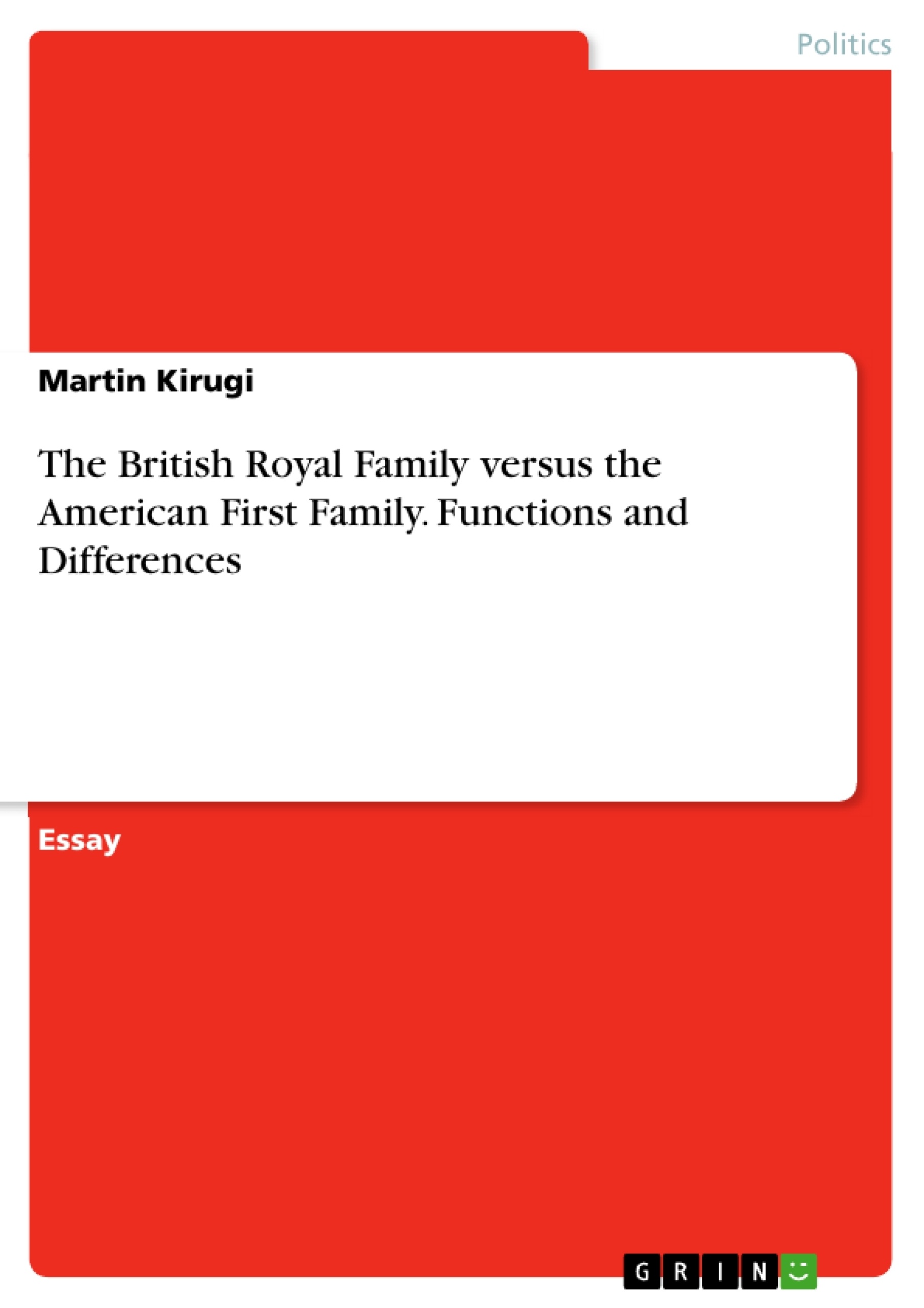In the United Kingdom, the Royal Family consists of close family members and the extended relatives of the ruler (Billig, 1992). Members of the Royal Family are either affiliated by means of birth or by marriage to other Royal Families (Vollmann, 2000). An example is the current regime in England under the rule of Queen Elizabeth (British Royal Family History). George V married Mary of Tech in order to strengthen their ties and bond with Germany during 1917 since George V had ancestry in Germany (British Royal Family History). After the marriage, the two royal nations decided to name their house as the House of Windsor since it was a unique house name without any ties to either nation (British Royal Family History). Queen Elizabeth, a descendant of George V, married Phillip who was the Duke of Edinburgh in order to strengthen the royalties therefore making the House of Windsor the official Royal Family ruling Britain (British Royal Family History).
The American First Families do not have any blood ties but certain First Families for example the Bush family maintained political respect having two more than one family member becoming the Head of State (Watson, 2004). Most American presidents came from rich families for example the Clinton Family while others started as mere people and later gained political knowledge and thus gaining high political positions for example the current president Barrack Obama (Watson, 2004).
Inhaltsverzeichnis (Table of Contents)
- The Royal Family versus the First Family
- Background
- Differences in terms of Leadership
- Difference in terms of reigning period and power sharing
- Functions of the Royal and First Families
- Financial Obligations
- Summary
Zielsetzung und Themenschwerpunkte (Objectives and Key Themes)
This text explores the similarities and differences between the British Royal Family and the American First Family, focusing on their roles, responsibilities, leadership styles, and financial obligations. The aim is to provide a comparative analysis of these two prominent institutions.
- Leadership styles and methods of accession
- The roles and responsibilities of both families
- The influence of power sharing and decision-making processes
- The financial implications of maintaining these institutions
- The social and political impact of the Royal Family and the First Family
Zusammenfassung der Kapitel (Chapter Summaries)
- The Royal Family versus the First Family: This chapter introduces the concept of the Royal Family and the First Family, outlining their historical contexts and key defining characteristics. It explores the differences in their origins, family structures, and the principles guiding their existence.
- Differences in terms of Leadership: This chapter delves into the distinct leadership styles and methods of accession for the king and the president. It explores how their respective positions are attained and the implications of hereditary versus elected leadership.
- Difference in terms of reigning period and power sharing: This chapter examines the duration of leadership and power-sharing arrangements between the monarch and the president. It highlights the contrast between hereditary succession and fixed terms, exploring the power dynamics and decision-making processes associated with each system.
- Functions of the Royal and First Families: This chapter explores the official roles and responsibilities of the Royal Family and the First Family. It analyzes their involvement in social, political, and ceremonial events, examining how they contribute to national identity and governance.
- Financial Obligations: This chapter delves into the financial implications of maintaining the Royal Family and the First Family. It compares the cost of their respective institutions, analyzing the sources of funding and the allocation of resources.
Schlüsselwörter (Keywords)
This text focuses on the comparative analysis of the British Royal Family and the American First Family, examining their leadership, roles, financial obligations, and societal impact. Key terms include monarchy, presidency, hereditary succession, elected leadership, power sharing, state privileges, financial resources, and national identity. The text explores the historical context, cultural significance, and political implications of these two prominent institutions.
- Quote paper
- Martin Kirugi (Author), 2015, The British Royal Family versus the American First Family. Functions and Differences, Munich, GRIN Verlag, https://www.grin.com/document/312257



